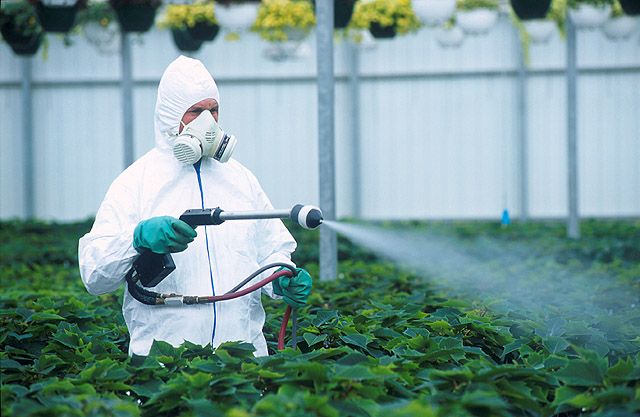New publications
Nanopesticides: new solution or new threat?
Last reviewed: 01.07.2025

All iLive content is medically reviewed or fact checked to ensure as much factual accuracy as possible.
We have strict sourcing guidelines and only link to reputable media sites, academic research institutions and, whenever possible, medically peer reviewed studies. Note that the numbers in parentheses ([1], [2], etc.) are clickable links to these studies.
If you feel that any of our content is inaccurate, out-of-date, or otherwise questionable, please select it and press Ctrl + Enter.
In order to assess all the risks associated with the use of nanopesticides, as well as to understand whether they will be safe and beneficial for human health and the environment, a comprehensive study is required. Melanie Kah and Thilo Hofmann from the Department of Geoecology at the University of Vienna conducted such a study in this area. Their results were published in the journal Critical Reviews in Environmental Science and Technology. The work presents a modern scientific vision of the possibility of using nanopesticides, and also outlines priority areas for further research.
Nanotechnology has developed extremely rapidly over the past few decades, allowing the creation of new materials with a very wide range of possible applications. The use of some of these materials may help reduce environmental pollution. For example, carbon nanotubes and metal nanoparticles can be used to clean up contaminated water and soil.

However, there is still no 100% certainty that the use of nanomaterials will not have a detrimental effect on human health and the environment. The release of nanoparticles into the environment, in accordance with the precautionary principle, should be limited until their potential hazard or toxicity has been fully assessed. As Thilo Hofmann (now Dean of the Faculty of Geosciences, Geography and Astronomy at the University of Vienna) explains, a full understanding of the impact of nanoparticles on the environment is necessary, especially in order to objectively assess whether the potential benefits outweigh the potential risks associated with the use of a new technology.
Among the many possible uses of nanoparticles, it stands out that nanotechnology has enormous potential to create revolutionary new methods of farming. Research has been very active in recent years, and new pesticides have been created using nanotechnology. Nanopesticides are a wide range of different products, some of which are already on the market, such as the antimicrobial pesticide HeiQ AGS-20 based on silver nanoparticles. Although research into these nanopesticides is in full swing, little is known about this new product to the public and government agencies, and it has not yet entered the market and will not enter it for the time being (in most cases, what is advertised today as nanopesticides are not, strictly speaking, such). Since the new product not only has improved but also new properties, the situation will soon change and humanity and its environment will experience new benefits of nanopesticides, as well as new risks associated with their use, Thilo Hofmann emphasizes again.
Nanopesticides cover a large number of products, some of which have already appeared on the market. The use of nanopesticides is the deliberate introduction of large quantities of nanoparticles designed by humans. This innovation, like many others, will entail various changes in the environment, which can be both negative and positive, including the impact on human health. The use of such pesticides and fertilizers will help both reduce water and soil pollution, and additional pollution due to the emergence of new properties (fast spread and application, greater efficiency and toxicity, for example).
The current level of knowledge about nanoparticles does not allow us to say with certainty how effective and safe their use will be. Only large-scale studies will allow us to assess all the risks. It will also require changes to the existing legislation that regulates the use of pesticides.
Nanopesticides can create new types of pollution that will spread over vast areas and will be very difficult to eliminate. There have been many examples in history where a new technology subsequently created a new type of pollution that causes the destruction of ecosystems and various diseases in people. The most famous example is coal and petroleum-based motor fuel, which today are the cause of a real global epidemic of lung and oncological diseases.
Many scientists fear that the same story could repeat itself with nanoparticles used in agriculture. Moreover, while harmful car exhausts can be dealt with by switching to other energy sources, it will be very difficult to extract nanoparticles from soil and water.

 [
[